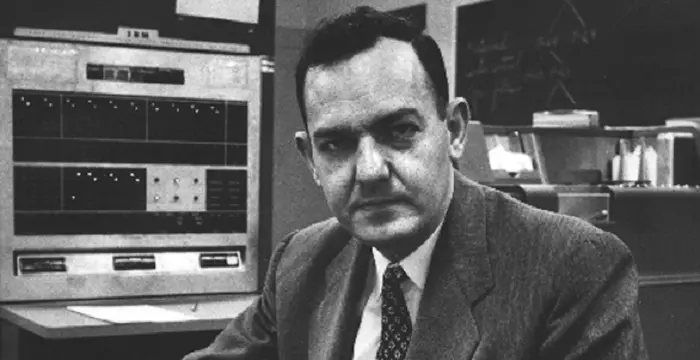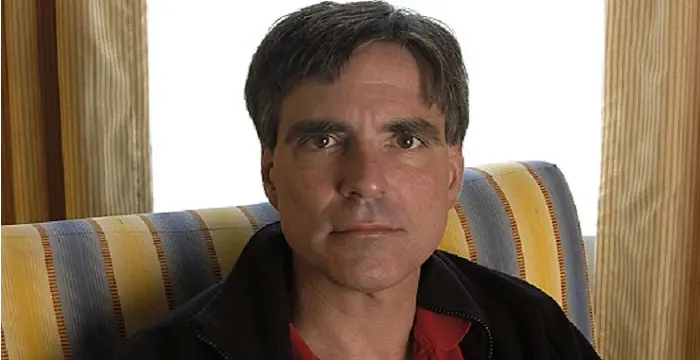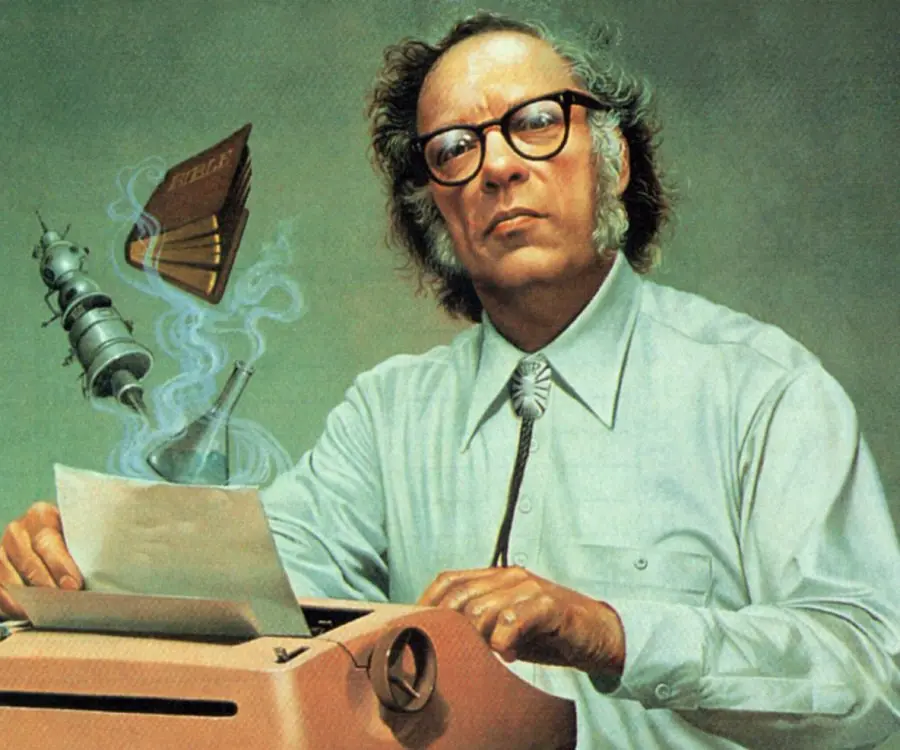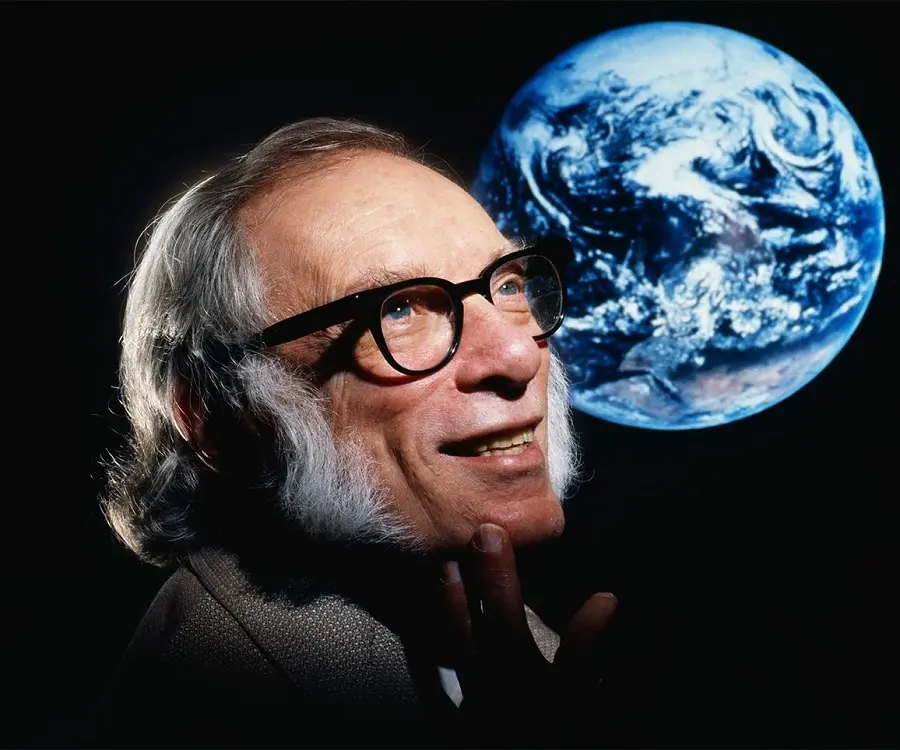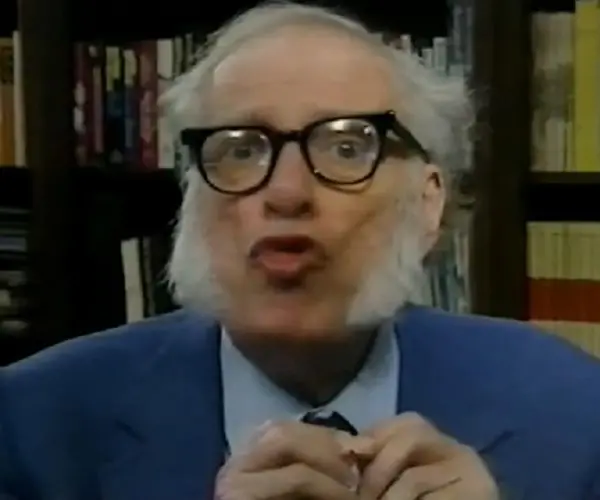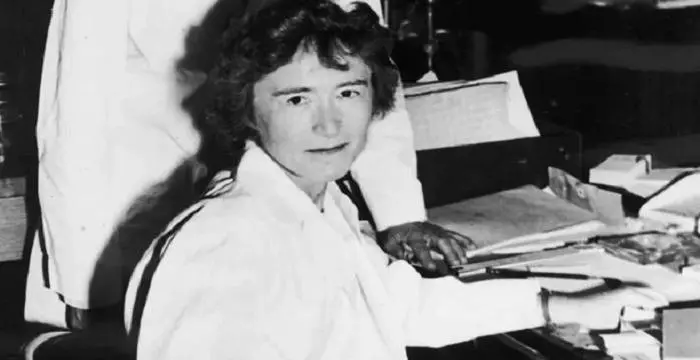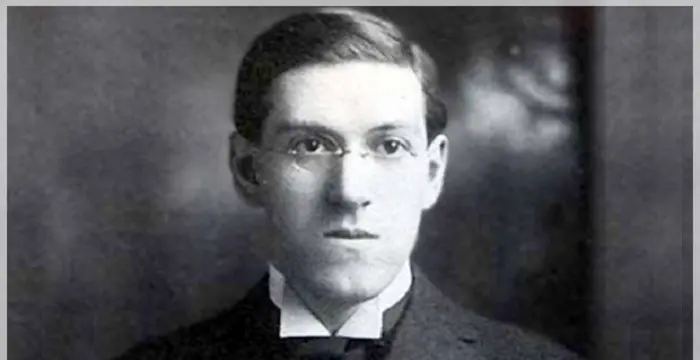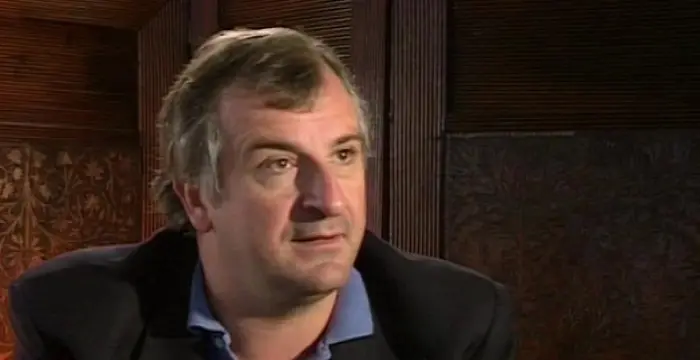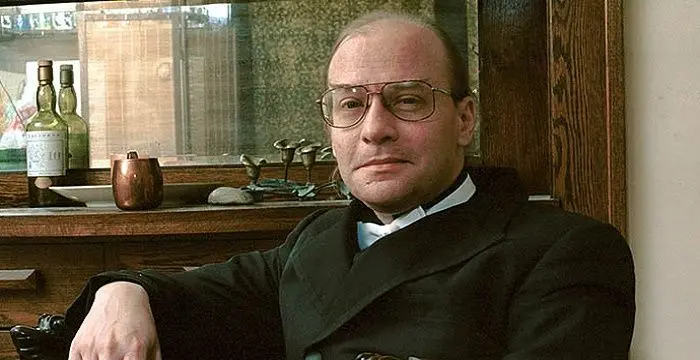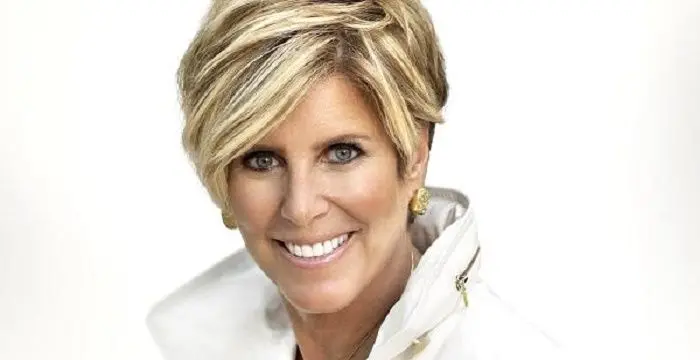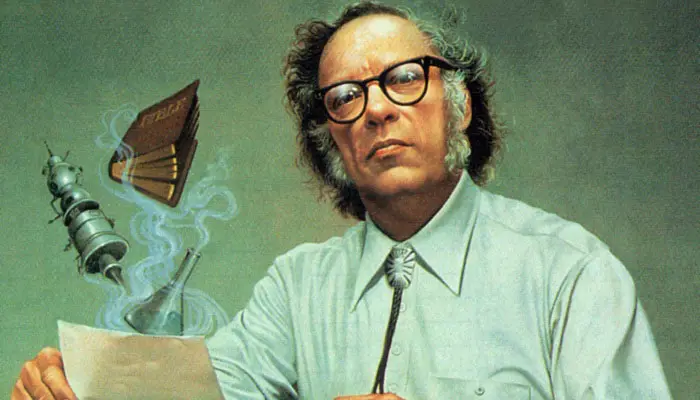
Isaac Asimov - Professor, Timeline and Personal Life
Isaac Asimov's Personal Details
Isaac Asimov was an American professor of biochemistry and a renowned author of science fiction and popular science books
| Information | Detail |
|---|---|
| Birthday | January 2, 1920 |
| Died on | April 6, 1992 |
| Nationality | American |
| Famous | Biochemists, Writers, Science Fiction Writers, Professor |
| Spouses | Gertrude Blugerman (1942-1973), Janet Opal Jeppson (1973-1992) |
| Siblings | Marcia, Stanley |
| Childrens | David Asimov, Robyn Asimov |
| Universities |
|
| Founder / Co-Founder |
|
| Cause of death |
|
| Birth Place | Petrovichi, Russian SFSR |
| Religion | Atheist, Humanist, Rationalist |
| Gender | Male |
| Father | Judah Asimov |
| Mother | Anna Rachel (Berman) Asimov |
| Sun Sign | Capricorn |
| Born in | Petrovichi, Russian SFSR |
| Famous as | Writer, Professor |
| Died at Age | 72 |
// Famous Professor
Temple Grandin
Temple Grandin is a well-known American writer, autistic activist and animal expert. This biography profiles her childhood, life, achievements, career and timeline
Herbert Simon
Herbert Simon was an American political scientist, economist, sociologist, psychologist, and computer scientist. Check out this biography to know about his childhood, family life, achievements and other facts related to his life.
Randy Pausch
Randolph Frederick "Randy" Pausch was an American professor at Carnegie Mellon University (CMU) in Pittsburgh. Check out this biography to know about his childhood, family life, achievements and other facts about his life.
Isaac Asimov's photo
Who is Isaac Asimov?
Isaac Asimov is best known as the most successful writer of science fiction and popular science books. Asimov opened the doors for the new age of science fiction writing which the world had never tasted before him. Asimov is credited with having edited over 500 books. Asimov’s most successful work was on hard science fiction and his most notable book is the ‘Foundation Series’. Asimov is also widely popular for his easy Physics, astronomy and mathematics books alongside his works on the Bible, William Shakespeare and chemistry. Asimov was a brilliant professor of biochemistry at Boston University. Besides being a prolific writer, Asimov was also an integral part of (President) the American Humanist Association. Asimov is also known for his work as a civilian at the Philadelphia Navy Yard's Naval Air Experimental Station during the World War II. “Robotics” was a term coined by Asimov which went on to become a branch of technology.
// Famous Biochemists
Robert Huber
Robert Huber is a German biochemist and Nobel Laureate. Check out this biography to know about his childhood, life, achievements, works & timeline.
Charles Best
Charles Best was a great scientist and a renowned physiologist who is remembered for being the co-discoverer of insulin. Read this biography to learn about his profile, childhood, life and timeline.
Gerty Cori
Gerty Theresa Cori was a Nobel Prize winning biochemist who discovered the catalytic conversion of glycogen. To know more about her childhood, career, profile and timeline read on
Biography detail
Isaac Asimov Childhood
There is much confusion surrounding Isaac Asimov’s exact date of birth. Isaac Asimov was born anywhere between 4 October 1919 and 2 January 1920 in Petrovichi in Byelorussian Soviet Socialist Republic presently known as Russia to a Jewish miller family. His mother was Anna Rachel Berman Asimov while Judah Asimov was his father. He is known to have celebrated his birthday on 2 January. His name in purely Russian is spelt as Isaak Ozimov. Isaac was 3 years old when his family shifted to the United States. His parents being Yiddish and English speakers, Asimov never learnt how to speak proper Russian.
Early Years
Asimov was highly interested in science fiction as a young kid. He extensively read popular pulp magazines which his father asked him not to read because Asimov’s father felt the magazines were useless. However, Asimov got his way with his father making him see the ‘science’ factor alive in the magazines which made them educational in nature. Asimov’s great interest in this field made him take up the pen at the age of 11 when he first started writing stories. When he turned 19, Asimov had honed the art of writing professional science fiction and his stories were sold to science fiction magazines of his time. Asimov discovered community of people who were hugely interested in science fiction and they were called SF fandom or Science fiction fandom. Asimov got heavily influenced by the editor of ‘Astounding Science Fiction’, John W. Campbell who later became a personal friend of Asimov.
Education
Asimov received his formal education from several schools registered under New York City Public Schools which included Boys High School, in Brooklyn, New York. He moved to Seth Low Junior College studying for two years before joining Columbia University where he completed his remaining education for gaining his master’s degree. In 1939 Asimov received his graduation. He returned to Columbia University in 1948 to gain his Ph.D. in biochemistry.
Career
Before earning his Ph.D., Asimov spent 3 years working as a civilian at the Philadelphia Navy Yard's Naval Air Experimental Station during the World War II. As the war came to an end Asimov was offered a job in the US Army where he served for about 9 months before leaving the job after receiving an honourable discharge. Asimov spent a great military career which was short lived yet he gained high rank rising to become a corporal for his excellent typing skills. In 1946, Asimov barely escaped participation in the atomic bomb tests at Bikini Atoll.
In 1948 Asimov completed his Doctorate degree after which he was appointed to the faculty of the Boston University School of Medicine. He remained here for a long time before deciding to run his non teaching role at the University as he had already become an active writer from 1958. Asimov kept serving as an associate professor (he only held the title) but his full time commitment was with writing. Boston University’s Mugar Memorial Library has archived all the personal papers noted and written out by Asimov from the period spanning from 1965 to his end days with the University. Asimov had even donated all these papers to the University on curator Howard Gottlieb’s request. The Asimov collection comprises of 464 boxes, or seventy-one meters of shelf space. In 1979 Asimov was honoured by Boston University for his tremendous writing career and contributions and he was made the Professor of biochemistry.
Writing Career
Asimov used to extensively read science fiction as his family used to sell science fiction pulp magazines at their confectionery store in 1929. His contact with the science fiction community was built in the 1930s. In 1937 Asimov wrote his first science fiction story, “Cosmic Corkscrew” but was unable to complete it. In June 1938 Asimov visited the offices of Astounding Science Fiction which made him think of completing his story. On 19 June 1938 Asimov completed his “Cosmic Corkscrew” and went in person to submit his story to John W. Campbell, editor of Astounding. Asimov’s story was rejected but he was encouraged by Campbell to keep trying. Asimov soon came up with his third story, “Marooned Off Vesta” which he sold to Amazing Stories magazine in October. This story was published in the March issue of Amazing magazine in 1939. Asimov continued his writing and often sold his stories to various science fiction pulp magazines.
In 1941 Asimov brought out his 32nd story named “Nightfall” which became very popular and is often known to be the most famous science fiction stories of all time. Nightfall (was voted as “the best science fiction story ever” in 1968 by Science Fiction Writers of America) was the introduction of a new genre of writing which was more of a social science fiction bringing in a new trend in the 1940s. It was later brought out in a short story collection, ‘Nightfall and Other Stories’. By 1941 Asimov had sold (regularly) great many stories to Astounding magazine which led the science fiction field. All of Asimov’s published science fiction stories and other writings were featured in Astounding from 1943 to 1949.
In 1942 Asimov brought out the very first of his numerous Foundation series stories. His later works of the Foundation series include the Foundation Trilogy: Foundation (1951), Foundation and Empire (1952), and Second Foundation (1953). His Foundation series novels were about a Galactic Empire and the story of their collapse and rebirth set in a future universe. Foundation series is arguably the best sci-fi (popular short form for science fiction) work done by Asimov. Robot series (written much later) is also a brilliant work by Asimov. Such was the genius of Asimov that he wrote his robotic series simultaneously with the Foundation series. ‘I, Robot’ (made into a film in 2004 starring Hollywood actor Will Smith) was published in 1950 talking about positronic brain in robots (a fictional device) and their stories. This revolutionized the scientific world and encouraged many future writers to write on this. Asimov’s robot series stories formulated rules and codes of ethics for robots. In 1942 Asimov brought out his very famous ‘The Three Laws of Robotics’ which he introduced in his short story ‘Runaround’. The Laws are:
1. A robot may not injure a human being or, through inaction, allow a human being to come to harm.
2. A robot must obey any orders given to it by human beings, except where such orders would conflict with the First Law.
3. A robot must protect its own existence as long as such protection does not conflict with the First or Second Law.
‘The Bicentennial Man’ was also a very popular story of the robot series which was later made into a Hollywood film starring Robin Williams.
Other Contributions
In the late 1950s and 60s Asimov stopped writing fictions. He published four adult novels two of which were mysteries. He increased his non-fiction writing after the launch of Sputnik in 1957. Magazine of Fantasy and Science Fiction had asked Asimov to regularly contribute for their monthly edition in the non-fiction column. Another bimonthly companion magazine ‘Venture Science Fiction Magazine’ which had dedicated themselves purely in serving popular science and Asimov got his full freedom as the magazine’s editor. First F&SF columns appeared in November 1958. Asimov also dedicatedly wrote about social issues and observations of his time in his essays "Thinking About Thinking" and "Science: Knock Plastic" (1967). He wrote many other essays dealing with society.
Asimov wrote about bible in two parts bringing out ‘Asimov's Guide to the Bible’ in two volumes, one covering the Old Testament in 1967 and the other covering the New Testament in 1969.
Asimov was greatly interested in English Literature which guided him to write and publish ‘Asimov's Guide to Shakespeare’ in 1970, ‘Asimov's Annotated Paradise Lost’ in 1974 and ‘The Annotated Gulliver's Travels’ in 1980.
Asimov wrote many different genre books of which 1987’s ‘How to Enjoy Writing: A Book of Aid and Comfort’ is a notable one which Asimov had co written. This book talked about ways to build positive attitudes and how to deal with discouragement distractions, rejection and thick-headed editors. Several husband-wife dialogues surrounding an author’s ups and downs, quotations, essays, anecdotes were included in the book.
Asimov coined the term “Robotics” (which came out for the first time in 1941 story, Liar). Asimov also termed the word “Spome” in one of his papers, “There’s No Place Like Spome” which was originally presented as a paper to the American Chemical Society on September 13, 1965. Spome is a type of any system which is closed to matter but open to energy and is able to sustain human life indefinitely.
Asimov was greatly interested in History which made him write 14 popular history books, some of the notable ones being, ‘The Greeks: A Great Adventure’ (1965), ‘The Roman Republic’ (1966), ‘The Roman Empire’ (1967), ‘The Egyptians’ (1967) and ‘The Near East: 10,000 Years of History’ (1968).
Personal Life
On 26 July 1942 Asimov married Gertrude Blugerman with whom he had two children, David (born in 1951) and Robyn Joan (born in 1955). In 1970 Asimov separated from Gertrude before getting divorced in 1973. Asimov married Janet O. Jeppson in the same year.
Asimov had very different habits. He liked to listen to the noise of trains passing by during his reading hours so he often enclosed himself. He was always afraid of flying. Asimov was a very good public speaker and he was very friendly to converse and discuss topics with.
Death
In 1977 Asimov had a heart attack for which he went for triple bypass surgery in December 1983. He died in New York City on 6 April 1992. Asimov’s brother Stanley had reported heart and kidney failure which had possibly caused Asimov’s death.
// Famous Science Fiction Writers
H. P. Lovecraft
H. P. Lovecraft was an American horror fiction writer. Check out this biography to know about his childhood, family life, achievements and fun facts about him.
Douglas Adams
Douglas Adams was an English writer best known for the science fiction series ‘The Hitchhiker's Guide to the Galaxy’. This biography of Douglas Adams provides detailed information about his childhood, life, achievements, works & timeline.
John M. Ford
John M. Ford was a renowned American writer, poet and game designer. This biography offers detailed information about his childhood, life, career, works, achievements and timeline.
Isaac Asimov's awards
| Year | Name | Award |
|---|---|---|
Other | ||
| 0 | Thomas Alva Edison Foundation Award | |
| 0 | Howard W. Blakeslee Award | |
| 0 | Boston University's Publication Merit Award | |
| 0 | Special Hugo Award | |
// Famous Writers
Joyce Meyer
Joyce Meyer is a Christian author and speaker. This biography provides detailed information about her childhood, life, achievements, works & timeline
Temple Grandin
Temple Grandin is a well-known American writer, autistic activist and animal expert. This biography profiles her childhood, life, achievements, career and timeline
Tennessee Williams
Tennessee Williams was one of the greatest playwrights of the 20th century. This biography of Tennessee Williams provides detailed information about his childhood, life, achievements, works and timeline.
Charles Bukowski
Charles Bukowski was a German-born American novelist, short story writer and poet. With this biography, learn in details about his childhood, life, works, career and timeline
Susan Sontag
Susan Sontag is an American critical essayist, cultural analyst, novelist, political activist, filmmaker and playwright of international repute. Read on to find out more about her childhood, career, profile and timeline.
Suze Orman
Suze Orman is an American television host, financial advisor, author and motivational speaker, famous for her ‘The Suze Orman Show’ on CNBC. This biography profiles her childhood, life, career, works, achievements and timeline.
Isaac Asimov's FAQ
What is Isaac Asimov birthday?
Isaac Asimov was born at 1920-01-02
When was Isaac Asimov died?
Isaac Asimov was died at 1992-04-06
Where was Isaac Asimov died?
Isaac Asimov was died in New York City, New York, U.S.
Which age was Isaac Asimov died?
Isaac Asimov was died at age 72
Where is Isaac Asimov's birth place?
Isaac Asimov was born in Petrovichi, Russian SFSR
What is Isaac Asimov nationalities?
Isaac Asimov's nationalities is American
Who is Isaac Asimov spouses?
Isaac Asimov's spouses is Gertrude Blugerman (1942-1973), Janet Opal Jeppson (1973-1992)
Who is Isaac Asimov siblings?
Isaac Asimov's siblings is Marcia, Stanley
Who is Isaac Asimov childrens?
Isaac Asimov's childrens is David Asimov, Robyn Asimov
What was Isaac Asimov universities?
Isaac Asimov studied at Columbia University, PhD. Biochemistry, 1948
Which company or organization was founded by Isaac Asimov?
Isaac Asimov was the founder/co-founder of Committee for the Scientific Investigation of Claims of the Paranormal (CSICOP)
What is Isaac Asimov's cause of dead?
Isaac Asimov dead because of AIDS
What is Isaac Asimov's religion?
Isaac Asimov's religion is Atheist, Humanist, Rationalist
Who is Isaac Asimov's father?
Isaac Asimov's father is Judah Asimov
Who is Isaac Asimov's mother?
Isaac Asimov's mother is Anna Rachel (Berman) Asimov
What is Isaac Asimov's sun sign?
Isaac Asimov is Capricorn
How famous is Isaac Asimov?
Isaac Asimov is famouse as Writer, Professor

